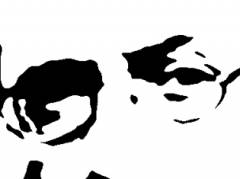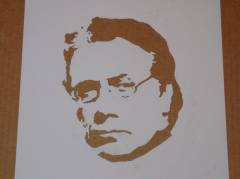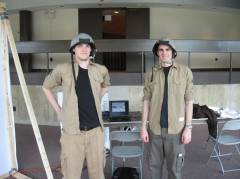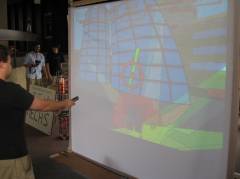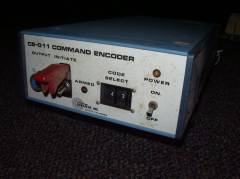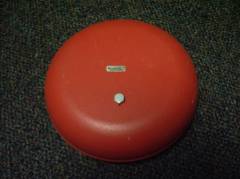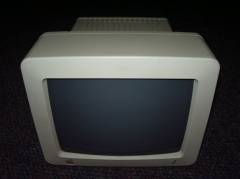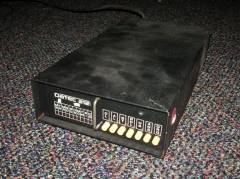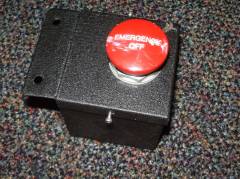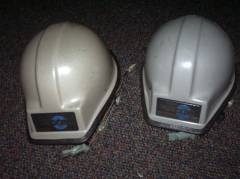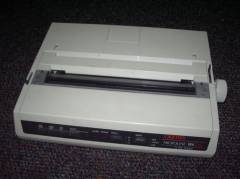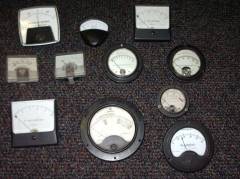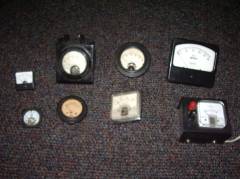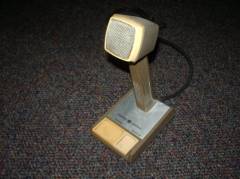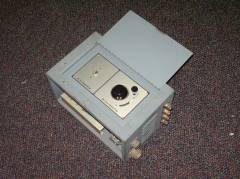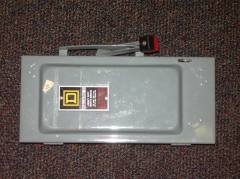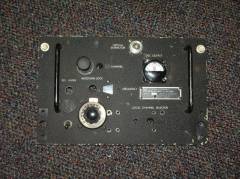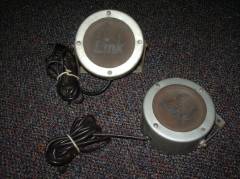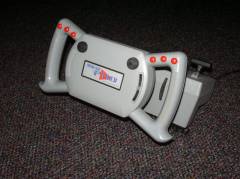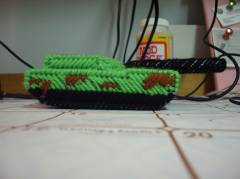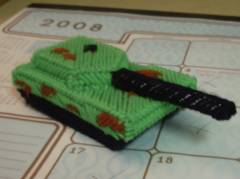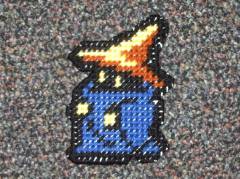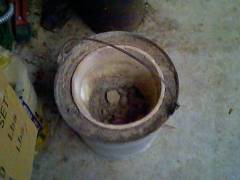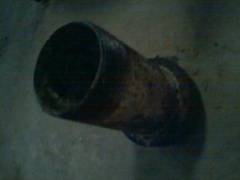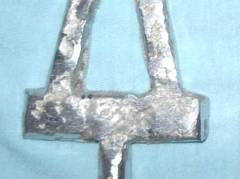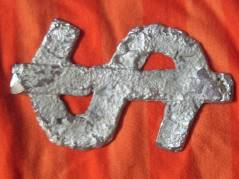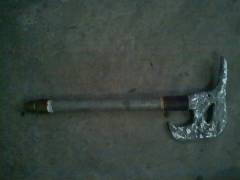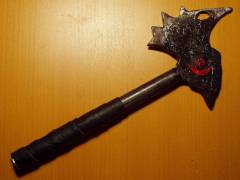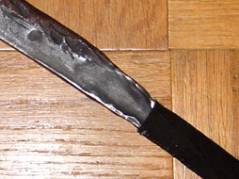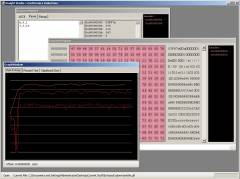I’ve been in the habit of making my own tee-shirts for a while – over the years, I’ve used iron-on transfers, stippled acrylic fabric paint, and even spray paint, although that didn’t work very well. I’ve been sort of fed up with not being able to make proper stencil shirts, though, so I bought some textile ink at A.C. Moore and, using a thin sheet of plastic, made a proper stenciled tee-shirt.
I used photoshop to make the stencil design; I took a photo of Edward James Olmos as Admiral Adama from Battlestar Galactica, cut the photo from the background, used the threshold function to reduce it to a black and white image, gaussian blurred the image to soften some of the lines, and then used the brush to eliminate any white areas within black areas. The last step is sort of important, because all of the black areas were physically removed in the stencil, and thus anything within them would be too. The end result was an image like this:
I printed the image at the size I wanted, traced it onto a sheet of thin, rigid plastic (this, to be exact) with a fine-point sharpie, and then cut out all the black areas with a hobby knife. The resulting stencil:
After making the stencil, I used a small roller (solid rubber, not the kind that holds a lot of ink) to roll the ink through the stencil, onto the shirt. I put a piece of cardboard between the two sides of the shirt to prevent ink from bleeding through from the front to the back, which in hindsight was a pretty damn good idea – I had to over apply ink in some areas, so a ton bled through. The stencil did a remarkably good job of keeping the ink within the lines, though, as you can see in the following picture:
Overall, an epic tee-shirt victory!

